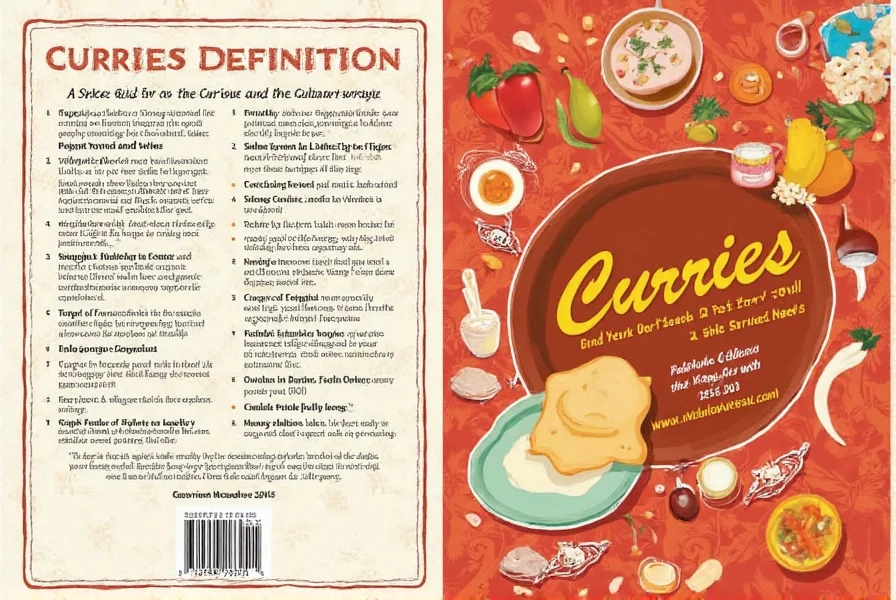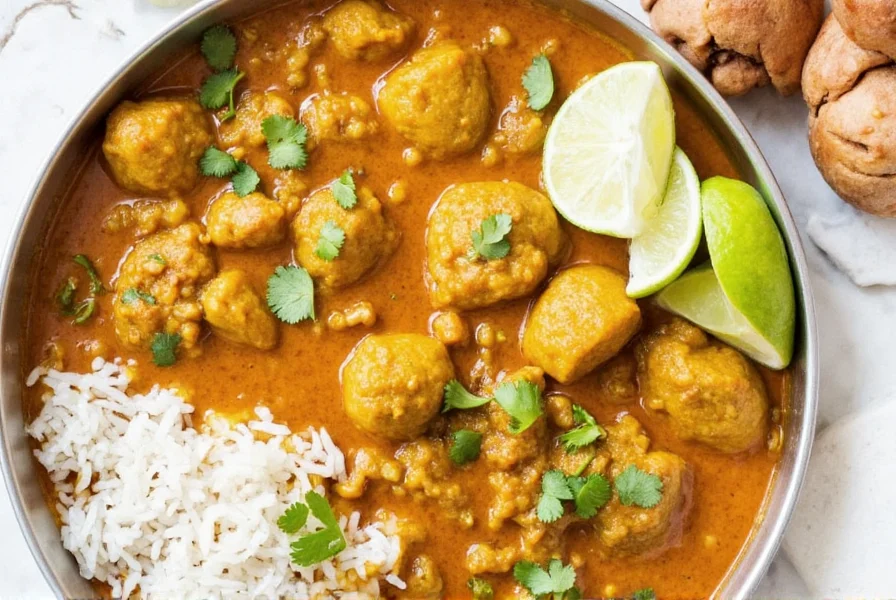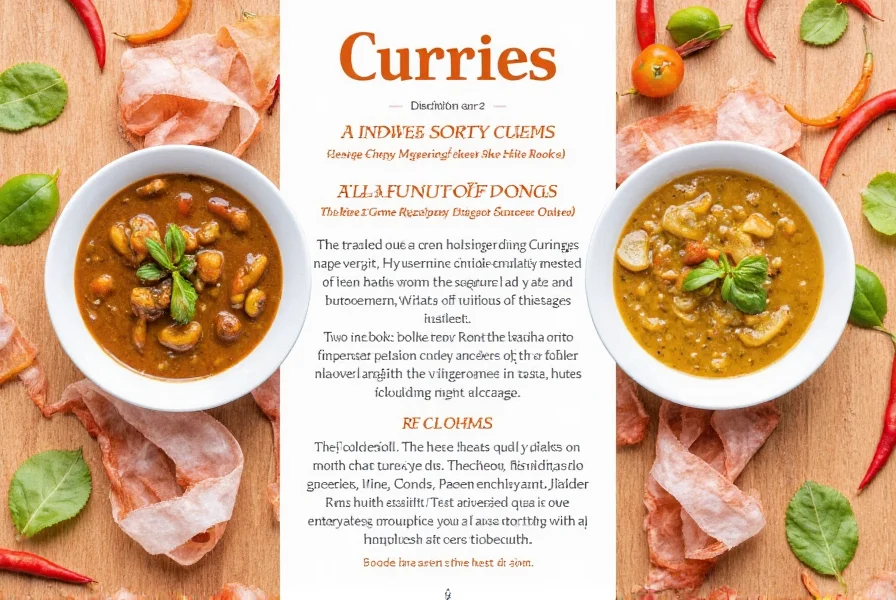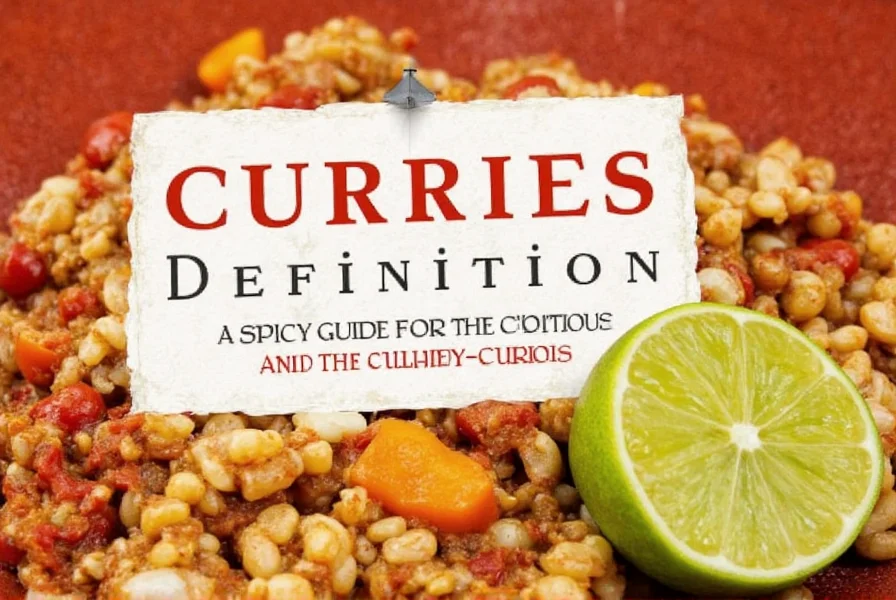Table of Contents
Curry Definition
Curry is a broad culinary term originating from the Tamil word "kari," meaning "sauce" or "relish." It refers to a variety of dishes cooked in spiced sauces or stews, not a single spice or dish. The term was popularized by British colonists in India during the 18th century and has since spread globally, with each region developing its own unique interpretations based on local ingredients and traditions.
Common misconceptions include:
- Curry is just a single spice: No! It's a blend of multiple spices.
- Only Indian food is called curry: Not true. Many other cuisines have their own versions.
- All curries are hot: Some are mild, some are spicy, and some are even sweet.

Types of Curries Around the World
| Country | Popular Curry Type | Key Characteristics |
|---|---|---|
| India | Butter Chicken | Milk-based, creamy, and mildly spiced |
| Thailand | Green Curry | Spicy, coconut milk-based, and packed with herbs |
| Sri Lanka | Wanna Curry | Rich, tomato-based, and full of flavor |
| Japan | Kare raisu (Kare Raisu) | A milder, more Western-influenced version |

Key Ingredients in a Curry
At the heart of every good curry are a few essential ingredients that bring the dish together. Here are the most common ones:
- Onions: Sautéed to add sweetness and depth
- Garlic and Ginger: Add aroma and warmth
- Tomatoes: Provide acidity and richness
- Coconut Milk: Adds creaminess, especially in Thai curries
- Spices: The soul of the curry — think turmeric, cumin, coriander, chili, etc.
Cooking Tips for Perfect Curries
Even the best spices can be ruined by poor technique. Here are some practical tips to help you make a perfect curry every time:
- Use fresh spices: Ground spices lose potency over time. Buy whole spices and grind them yourself when needed.
- Toast your spices: This enhances their flavor and aroma. A dry pan or a spice grinder works well.
- Don't rush the cooking process: Letting the onions and spices cook slowly allows the flavors to develop fully.
- Adjust the consistency: Use water, broth, or cream to reach your desired thickness.
- Let it rest: A curry tastes better after sitting for a while. The flavors continue to meld.

Buying Guide for Curry Spices
Choosing the right curry spices can make all the difference in your dish. Here's a guide to help you pick the best options:
Top 5 Curry Spice Blends
- Madras Curry Powder
- Features: Medium heat, with a balance of earthy and citrusy notes
- Best For: Vegetable and chicken curries
- Occasions: Family dinners, casual gatherings
- Japanese Karashi Curry
- Features: Mild, slightly sweet, and easy to digest
- Best For: Meat and rice bowls
- Occasions: Quick meals, weeknight dinners
- Thai Green Curry Paste
- Features: Spicy, fragrant, and herb-packed
- Best For: Vegetarian and seafood curries
- Occasions: Special occasions, restaurant-style meals
- Indian Garam Masala
- Features: Warm, aromatic, and complex
- Best For: Mutton, chicken, and lentil dishes
- Occasions: Festive meals, family feasts
- Caribbean Jerk Seasoning
- Features: Smoky, spicy, and full of bold flavors
- Best For: Grilled meats and seafood
- Occasions: Barbecues, summer parties
Frequently Asked Questions About Curry
What is the official definition of curry?
Curry is not a single dish or spice but a broad culinary term describing dishes cooked in a sauce or stew containing a mixture of spices. The term originated from the Tamil word "kari" meaning sauce, and was popularized by British colonists in India. Today, curry refers to a wide variety of dishes across multiple cultures with their own unique interpretations.
Is curry an Indian dish?
While curry is often associated with Indian cuisine, the concept of cooking in spiced sauces exists in many cultures worldwide. The British popularized the term "curry" for Indian dishes during colonial times, but similar preparations exist across Asia, Africa, and the Caribbean, each with their own regional variations and names.
Are all curries spicy?
No, not all curries are spicy. The heat level varies significantly depending on the region and recipe. Japanese curry is typically mild and slightly sweet, while many Thai curries can be quite spicy. Some curries like butter chicken are deliberately made mild, while others like vindaloo are known for their heat. The spice level is customizable to personal preference.
What's the difference between curry powder and curry paste?
Curry powder is a dry spice blend typically used in Indian and British-style curries, while curry paste is a wet mixture containing fresh ingredients like chilies, lemongrass, galangal, and shrimp paste, commonly used in Thai cooking. Curry pastes generally have a shorter shelf life than powders and provide a more complex, fresh flavor profile.
Can I make curry without curry powder or paste?
Absolutely! Many traditional curries don't use pre-made curry powders or pastes at all. You can create your own spice blend using individual spices like turmeric, cumin, coriander, and others. Fresh curries often start with whole spices toasted and ground specifically for the dish, which typically yields better flavor than pre-mixed blends.
Conclusion
Understanding the curry definition is just the beginning. Whether you're cooking a traditional Indian butter chicken, a fiery Thai green curry, or a comforting Japanese karē, the world of curries offers endless possibilities. With the right ingredients, techniques, and a bit of creativity, you can bring the magic of curries to your kitchen.
So next time you're looking to spice things up, remember: a curry isn't just a dish—it's a celebration of culture, flavor, and tradition. Now go out there and make something delicious!











 浙公网安备
33010002000092号
浙公网安备
33010002000092号 浙B2-20120091-4
浙B2-20120091-4